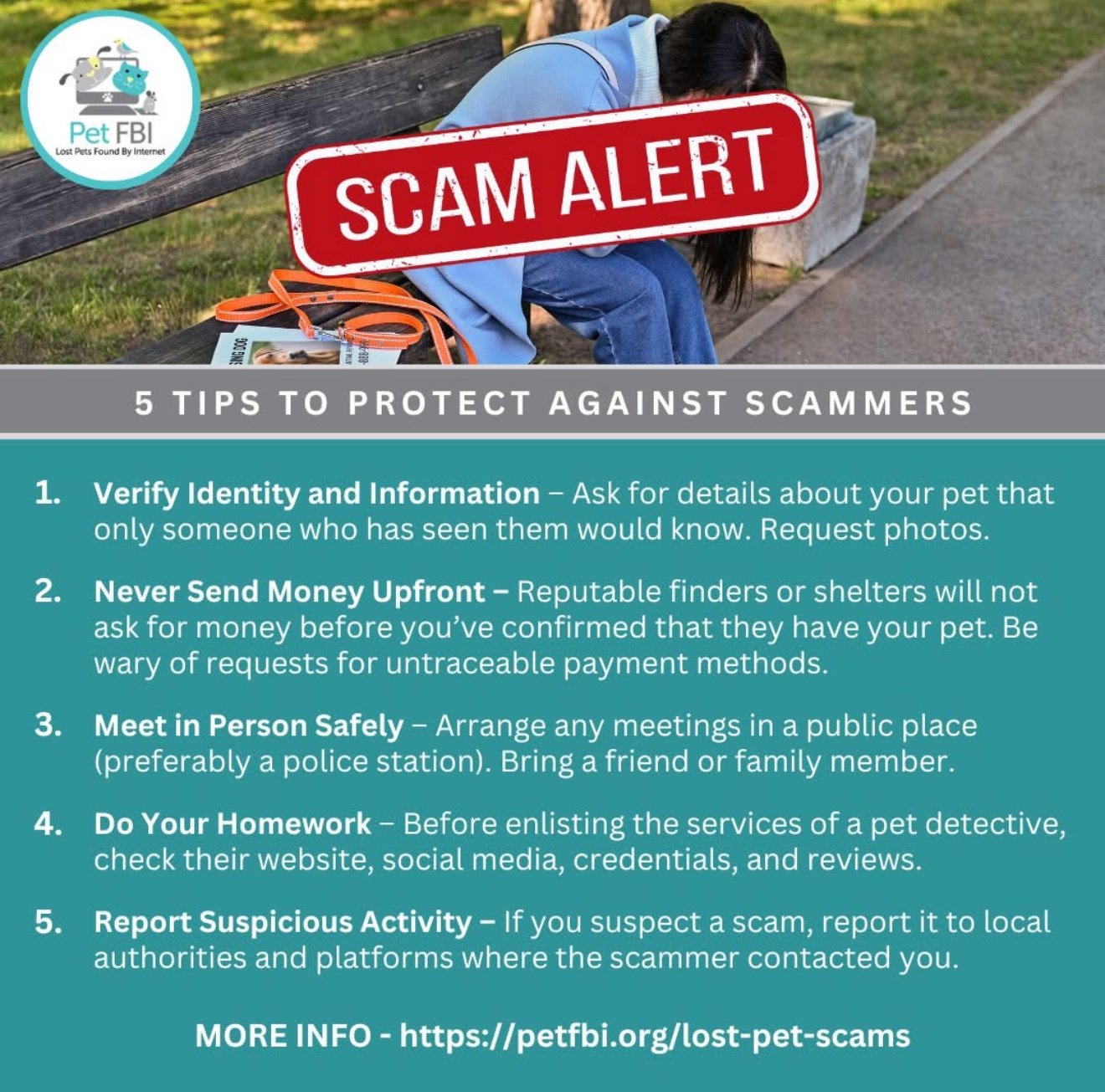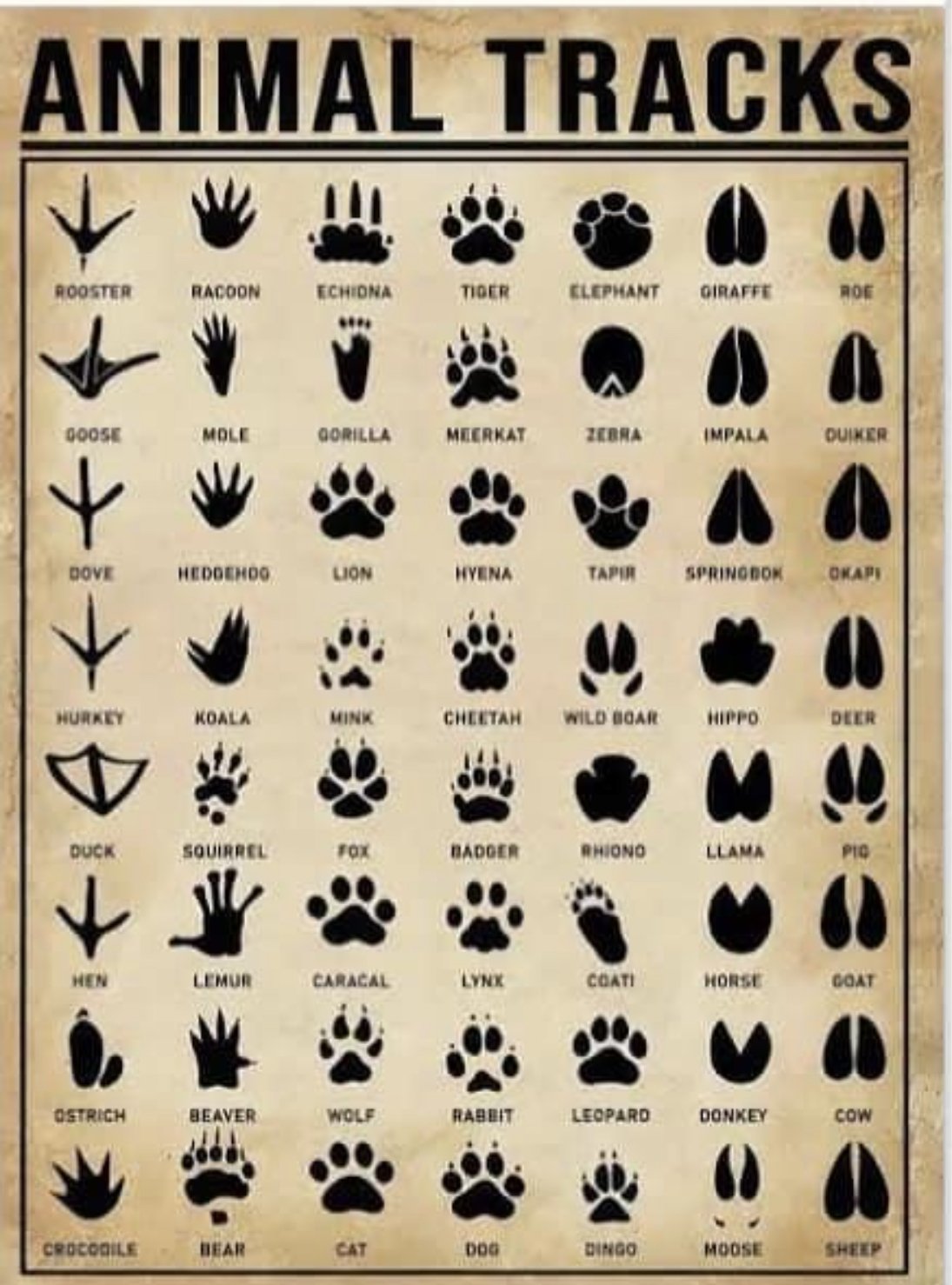EDUCATION
PREVENTION IS KEY:
Microchip and register
GPS Collars
Tags
Here are some tips to help prevent losing your pet:
1 –Collar With Dog Tags
It is highly recommended to get a collar with dog tags for your pet. In case your furry friend gets loose, the collar with tags is one of the first things many people will check to identify the owner. Therefore, it is crucial to keep your contact information up to date on your pet's tags. Also, always remember to put your pet's collar on before leaving the house to ensure their safety.
2 – MICROCHIP YOUR PET
It's common for lost pets to be found through the collars they wear, but what if your pet loses their collar or runs away without it on? Fortunately, microchips are a great solution. These small devices are painlessly implanted just under your pet's skin. If your pet is brought to a shelter or found by an animal control officer, they can scan the microchip to retrieve your contact information and help you reunite with your furry friend.
3 – KEEP YOUR PET ON A LEASH
When you are taking your pet for a walk, especially in a place you are not familiar with, it is crucial to ensure that your pet is on a leash. Life can be unpredictable, and even the most well-trained pets can get frightened by loud sounds or unfamiliar places, which can cause them to run away from you. By practicing secure and safe leash training, you can ensure that your pet stays by your side and that you both remain safe.
4 – CLOSE GATES AND DOORS
To ensure the safety of your pets, it is important to secure your house by closing fence gates and doors. If you have a fenced-in yard, make sure that the fence is tall enough so that your pet cannot jump out of it. Also, ensure that the fence is secured enough around the bottom so that your pet cannot dig underneath it. When leaving or entering your home, be mindful of your pet's location and ensure that they are away from the door to prevent them from running out. Take some time to look around your house and identify any potential areas where your pet might escape. If you see any such areas, make sure to secure them to prevent your pet from running away.
5 – PRACTICE TRAVEL SAFETY
Traveling to new places can be a thrilling experience. However, it may not always be the same for our furry friends. During the entire journey, ensure that you have solid safety travel plans in place for your pets. Make sure your pet is secured in the backseat of your car with the windows locked. Keep a leash available for potty breaks. This will ensure that your pet stays safe and secure throughout your journey.
6 – SUPERVISE YOUR PET CLOSELY
It's important to keep an eye on your pet regardless of your location, even if you are at home. Sometimes, our pets can escape and wander off within a few moments of us being distracted. If you need to be away for a long time, having a doggy cam can be particularly useful.
7 – TEACH RELIABLE RECALL COMMANDS
Teaching your dog basic commands like 'stay' and 'come' is important. However, it is equally important to teach them reliability. This means that your dog should understand what you are asking them to do, and you should be confident that they will obey your commands. You should practice the recall commands in a safe environment, but keep in mind that your dog may not always come to you, as each dog has its own personality. Certain situations may also prevent them from obeying your commands. You should never rely solely on recall, and only use it as another tool if your dog gets off their leash or out of your yard.
8 – BE EXTRA CAREFUL AROUND LOUD NOISES
It's important to be aware of loud noises in the environment, whether it's the sound of a car horn, thunderstorm, or fireworks. Loud noises can trigger an animal's fight or flight response, which increases the chance of them getting lost. Whenever possible, avoid loud areas and make sure your dog has a secure and calming place to go to when they get scared by an approaching storm. Preparing yourself and your pet beforehand will help you both feel safer and happier.
9 – MAKE SURE VACCINES ARE UP TO DATE
It is essential to ensure that your pet receives regular vaccinations to keep them healthy. Rabies is one of the most dangerous diseases that can affect both pets and humans. If your pet comes into contact with a rabid animal, you will be grateful that you have kept up with their routine vaccinations. Therefore, it is vital to schedule regular vet visits and keep your pet's vaccines up to date to prevent any unfortunate incidents.
10 – STAY CALM
It is important to stay calm in any situation, especially when you are around your pet. Your calmness will help your pet to relax, and if your pet gets lost, being calm will help you to think more clearly and locate them.
Always remember that pet loss prevention starts with you as a pet owner. If you happen to find a lost pet in your neighborhood, please report it by contacting the owner using the information on the pet's tags. Alternatively, you can take the pet to your local animal shelter to check if they have a microchip.
With so many pets lost at the hands of sitters, we put together a critical checklist of what every pet owner absolutely needs to have covered prior to choosing a pet sitter.
*** Should be applied to board and train and fosterers as well.***
CHOOSING A PET SITTER
• Insured and Licensed
• Vetted: background, experience, multiple references
• Meet and greet with sitter and their pets
• Check their yard: minimum 6-6.5 foot fence, no openings, locked gates, double check all entry points
• Bring your pet’s crate to sitter’s
• Educate sitter on pet behaviors, needs, quirks
• Dog should always be on slip lead or leash unless in home with exit points locked securely
• Never leave a dog unsupervised-new environments can change behaviors quickly
• Invest in properly fitted 1” wide flat collar (two fingers between collar and neck)
• If pet has a training e-collar make sure sitter properly trained to use
• Have ID tags with owner contact info
• Invest in air tags, GPS collar (keep charged daily)
• Register chip and keep contact info up to date
• Have sitter come to your home to pet sit
• Speak to sitter about who is coming and going from the home including pets. Even if your pet has never been a flight risk that can change in a heartbeat.
• Consider pet cams, outdoor security system
• Make sure sitter has all owner contact info and emergency contacts if you are not available
• Sitter must contact owners ASAP if pet goes missing. Note time, direction heading at main cross streets. Time is crucial!
• Discontinue use of e-collar (this will stress the dog-push into danger/traffic or the pet will run for miles to escape the punishment)
• Dogs can run up to 30 miles/day when in fight/flight survival mode!









